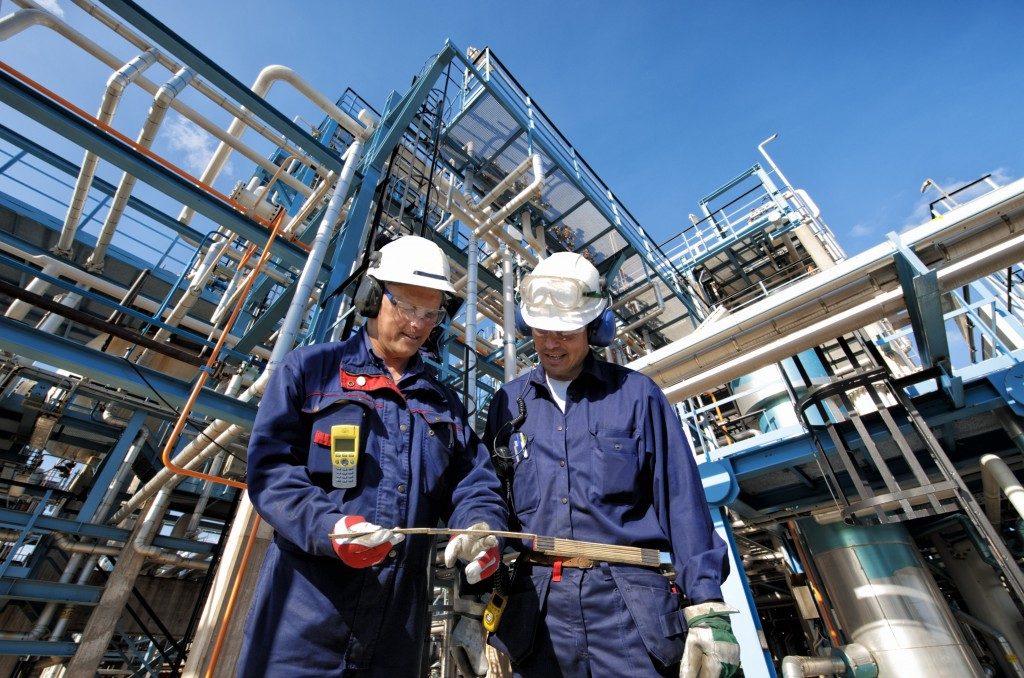The oil and gas industry is heavily involved in the extraction and circulation of fluids and gases. For this reason, plants, refineries, and other industrial venues consist of elaborate pipeline systems, which are where the transfer of liquids occurs. There are four primary kinds of pipeline systems: the well flowline, the interconnected equipment pieces for production, treatment, and storage, the sales or gathering pipeline, and the transmission pipeline. Below, we’ll provide a guide to well flowlines, which includes their main types and specifications of flowline controls.
Flowlines: The Fundamentals
After gas and oil have been located, and the well has been drilled successfully, the extracted product needs to be transported to the facility where it will be stored, treated, refined, and then transferred for future sale. Flowlines are necessary for this said transfer.
The Oilfield Glossary of Schlumberger defines flowlines as surface metallic pipelines that connect the wellhead directly to a manifold or the production facilities — such as separators and heat treaters — where the oil, gas, or water will be carried to and eventually processed.
Moreover, in bigger well fields, a number of flowlines often connect various individual wells to a piece of production equipment or manifold. A gathering line will then take charge of transferring the flow from the manifold to the location of pre-processing. The transfer can also be directed to a transportation vessel or facility.
Flowlines are located in either subsea or land well fields. They may also be positioned at a lower grade beneath the seafloor’s surface. Another type of pipeline that is similar to flowline is the gathering line. However, instead of a single flowline, the latter gathers the flow from multiple lines. Additionally, gather lines are typically utilized after flowlines have already brought the liquid or gas to a manifold.
Controls

In Texas and many other states, flowline springs and controls are available in an assortment of specifications. Furthermore, the main controls entail different-sized actuators that operate at a variety of pressures that utilize water, hydraulic fluid, or air. These actuators are commonly offered as double acting or spring return. To add, they are designed to be used on an array of valves, such as butterfly valves, ball valves, plug valves, and dumpers.
Types of Onshore or Subsea Flowlines
Designing a pipeline system requires consideration of many factors, including but not limited to the mechanics of the pipe, the efficiency of piping configurations, the cost of installation and materials, the availability of materials, the project’s lead time, and the nature and temperature of the environment in which it will be installed and operated.
The selection is even more complex for flowline systems that are buried under or within seabeds. Here are several examples of subsea flowlines, as provided by the International Petroleum Industry Environmental Conservation Association (IPIECA).
-
Coiled tubing
-
Bundled line
-
Single tubular
-
Riser
-
Hybrid riser
-
Steel catenary riser
-
Flexible catenary riser
-
Jumper
-
Pipe-in-pipe
-
Piggy-back
An efficient flowline design is vital as it can drastically minimize the amount of energy used in pumping produced gas and oil to a manifold. This results in lower costs and reduced emission of greenhouse gases. Moreover, a well-functioning flowline system not only lessens costs for pumping, but for the overall operation as well, as it enhances the trade-off between capital expenses and energy expenditure. Therefore, the energy needed for the installation of equipment pieces and the mining and manufacturing of the product will be significantly reduced.

